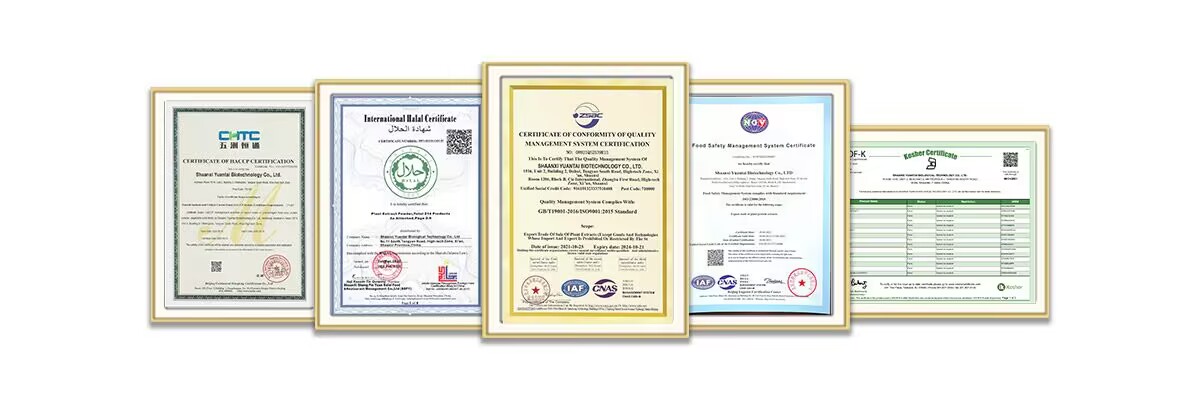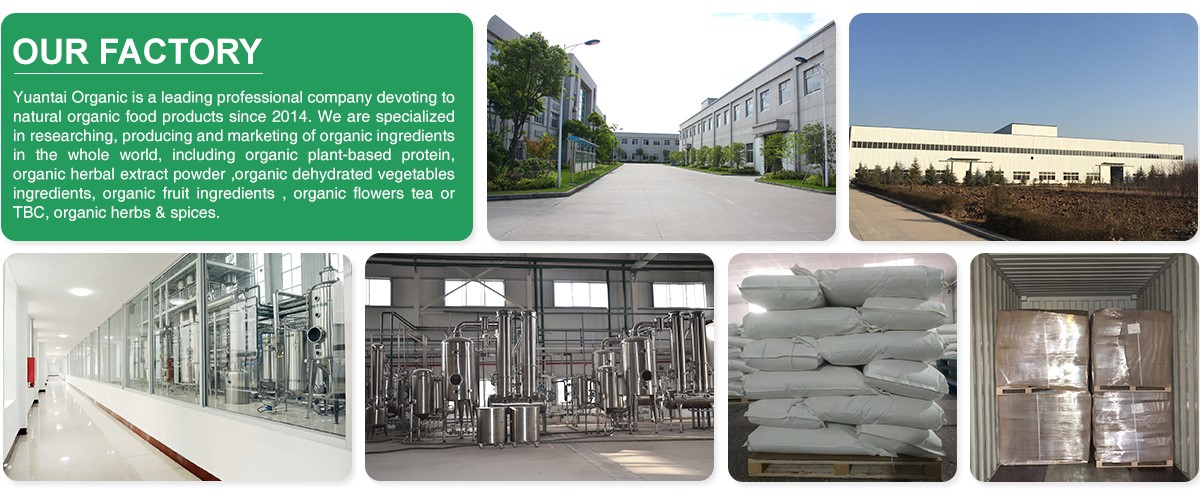Asiatic Acid Powder
Detection method: HPLC
Source: Centella asiatica
CAS: 464-92-6
Molecular formula: C30H48O5
Molecular weight: 488.7
EINECS: 482-720-9
Shipping speed:1-3 days
Inventory:In stock
Certificates:HACCP, HALAL, KOSHER, ISO9001, ISO22000, FDA
MOQ:25KG
Package:25Kg/barrel
Sales group:not for individual customers
- Fast Delievery
- Quality Assurance
- 24/7 Customer Service
Product Introduction
What is asiatic acid?
Asiatic acid powder is one of the main components of the triterpene extract of the natural plant Centella asiatica (L.) Urban. It has an ursane-type skeleton structure, and its structure is shown in Figure 1.

Nature
Asiatic acid was first isolated by Bontems in 1941, and its structure was determined by Polonsky. Its chemical name: 2α, 3β, 23-trihydroxy-ursane-12-en-28-acid. Asiatic acid is a white powder, odorless, bitter in taste, insoluble in water, and soluble in organic solvents such as absolute ethanol, dimethyl sulfoxide, and tetrahydrofuran.

What are the benefits?
Effect on skin care
Since Chasseaud et al. determined that asiatic acid itself has the effect of treating skin wounds in 1971, Centella asiatica extract (mainly containing asiatic acid and madecassoside) has been used to treat skin wounds and chronic ulcers, and is also used for Treats skin deformities caused by tuberculosis and leprosy. Normally, the skin is easily directly exposed to ultraviolet rays (UVA) and is the organ most susceptible to UVA. After UVA damage, premature aging of the skin will occur, that is, photoaging. UVA-mediated signal transduction pathways ultimately lead to photoaging, and the two most important causes are the excessive production of oxygen free radicals and the emergence of matrix metalloproteinases (MMPs).
Irradiating HaCaT keratinocytes with ultraviolet light can induce oxidative stress, enhance the expression of MMP-2, and cause changes in UVA-mediated signaling pathways. Asiatic acid can significantly inhibit the generation of oxygen free radical products and lipid peroxidation induced by ultraviolet rays. Treatment with 5 micromoles of asiatic acid can reduce the expression level of UVA-induced MMP-2 and reduce the activity of MMP-2 protein. In addition, UVA can increase p53 expression in HaCaT cells, which is a characteristic of UVA-induced DNA damage and cell death. This process can also be significantly inhibited after pretreatment with asiatic acid. Therefore, asiatic acid can effectively inhibit skin damage caused by UVA and prevent UVA-induced photoaging. By comparing the effects of asiatic acid, madecassoside, and madecassic acid on wound healing in mice, it was found that asiatic acid is the most effective ingredient in promoting wound healing.
Antibacterial effect
Studies have found that asiatic acid has good inhibitory effects on Candida albicans, Candida krusei, Cryptococcus neoformans, Escherichia coli, Sporothrix schenckii, Bacillus subtilis, Staphylococcus aureus, Shigella and other microorganisms. effect.
Antidepressant effect
In order to improve the bioavailability of drugs, Li Tiejun et al. synthesized sodium and ammonium asiatic acid salt derivatives. Using classic mouse tail suspension and forced swimming experimental models, they found that asiatic acid, asiatic acid sodium salt and hydroxyl At a dose of 30 mg/kg, Asiatic acid can significantly shorten the immobility time of tail suspension and forced swimming in mice. In addition, in the experiment of antagonizing eyelid ptosis in mice caused by reserpine, they also found that asiatic acid sodium salt, asiatic acid and madecassic acid had obvious antagonistic effects at a dose of 60 mg/kg, and the effect was significantly better. Compared with the marketed tricyclic drug doxepin, it can be judged that asiatic acid and its derivatives have strong antidepressant activity.
Hypoglycemic effect
Asiatic acid powder can significantly increase glucose excretion in alloxan-induced diabetic mice. The specific effect is not yet clear. It may achieve the effect of lowering blood sugar by inhibiting the activity of glycogen phosphorylase. Asiatic acid can counteract the decrease in cell membrane potential, superoxide dismutase (SOD), ATPase, and catalase (CAT) activities of myocardial mitochondria in diabetic rats caused by streptozotocin, and play a role in the complications of diabetes. to a certain extent.
Anti-inflammatory effect
It is reported that asiatic acid can significantly inhibit the increase in interleukin-8 (IL-8) secretion caused by necrosis factor (TNF-α), and has obvious anti-inflammatory effects. Asiatic acid can significantly inhibit the inflammatory response of RAW264.7 cells induced by LPS, and its mechanism is by reducing the amount of NO and the secretion of TNF-α. Because Asiatic acid has good anti-inflammatory effects, it has been used clinically in the treatment of surgical diseases and in the field of beauty and health care, such as skin trauma, chronic ulcers, delayed wound healing, surgical injuries, cellulitis, and hair shampooing. .
Protective effect against liver damage
Asiatic acid powder can inhibit the activation and transformation of rat hepatic stellate cells (HSC-T6), reduce the expression of alpha actin (alpha-SMA), and thereby inhibit liver fibrosis. The hepatoprotective mechanism of asiatic acid is by protecting liver cell mitochondria and scavenging superoxide anions and hydroxyl radicals. Studies have shown that asiatic acid can inhibit TGF-β-induced activation and transformation of rat hepatic stellate cells. Asiatic acid upregulates Smad7 mRNA negative feedback signal and prevents TGF-β-induced type I collagen synthesis in rat hepatic stellate cells through Smad7, thus achieving the effect of inhibiting liver fibrosis. Asiatic acid is a drug that can significantly fight liver fibrosis. Its analogues have a strong protective effect on hepatotoxicity induced by galactosamine and carbon tetrachloride. In view of the current broad research prospects of triterpenoids, and that asiatic acid is stronger than oleanolic acid (OA) and ursolic acid (UA) in scavenging free radicals and protecting mitochondria, asiatic acid has the potential to be developed The prospect of becoming a new liver-protecting drug.
Asiatic Acid supplier
Yuantai Organic Bio is committed to providing customers with the highest-quality bulk Asiatic Acid Powder and services so that every consumer can enjoy natural, healthy, and high-quality food. If you have any inquiries or needs about our products, please feel free to contact us, and we will reply to you as soon as possible.

_1737093401309.png)




